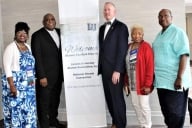You have /5 articles left.
Sign up for a free account or log in.
The New York Times has made reference to research universities consistently over its many years of publication. But in the last half century, the newspaper has grown less interested in the universities and more interested in their researchers, according to a new study.
A team at the University of Illinois at Urbana-Champaign analyzed 60 years’ worth of Times archives in an attempt to find out how its coverage of research universities has evolved since World War II. The researchers found that the proportion of articles focusing on particular institutions has declined significantly, while the share of articles on non-university topics that contain “sound bites” from university researchers has risen.
“In 1946, 53 percent of articles mentioning a research university were about that university, focusing on its research or activities,” the authors wrote. By 2005, “Just 15 percent of articles mentioning a university are about that university: the remaining 85 percent simply cite high-stature faculty for soundbite commentary on current events.”
The Urbana-Champaign team parsed the thousands of university references published in the Times in the latter 20th century with the help of a computer program, which separated articles in which the university name appears near the top from those where it shows up farther down in the article -- the assumption being that articles that mention a university’s name higher up are more likely to be about research or activities at that university, while articles that drop the name lower down are more likely to be quoting a professor on some topic apart from the university.
This methodology is not seamless, the authors admit. For example, an article might focus on the implications of a new study without mentioning the name of the university that conducted it until the end, says Kalev H. Leetaru, one of the study’s two main authors. So too might the Times run a story about a general topic, such as student loans, that might lead with an example from a specific university, even though the article is not really about that university.
But Leetaru says he and his co-researcher, Paul J. Magelli, checked the computer’s work, manually reviewing more than 500 articles and finding no evidence that the methodology was generating bad data.
“The number of articles mentioning higher education has stayed the same,” says Leetaru. “It’s just shifting from being about what they are doing to what they have to say.” Put another way, the authors say research universities have moved from being news makers to news commentators; hence the study's title, “The Soundbite University.”
Leetaru and Magelli’s analysis also revealed that the Times’s coverage has historically favored the Ivy League universities, with Columbia, Harvard, Yale, Princeton, Cornell, and the University of Pennsylvania ranking among the top eight most frequently referenced institutions during the 60-year sample period. (New York University and the University of California were the only non-Ivies to penetrate that circle, ranking No. 2 and No. 3, respectively. Brown University clocked in at No. 29; Columbia, referenced in more than 50,000 separate news items, was first.)
Times staffers contacted Monday by Inside Higher Ed had no immediate comment.
With tens of millions of visitors landing on its website each month, The New York Times is still an influential player in the information trade -- one reason the Urbana-Champaign researchers chose to focus on it. But the study was limited in its ability to analyze the contexts in which research universities are represented in blogs and other new-media sources. National news organizations were never the only visible sources of information on the research and activities of universities, but now they are even less so than in 1945 -- or, for that matter, in 2005. A study that, despite cursory efforts to account for Google et al., really only draws authoritative conclusions about trends within Times coverage does not have as powerful implications as it might have had several decades ago.
Nevertheless, the democratization of media does not mean all news organizations are created equal. The frequency with which a research university shows up in the pages (virtual or otherwise) of a source with the cachet of The New York Times still has intangible effects on the way that institution is perceived by “students, funders, and lawmakers,” says Leetaru.
The new way in which reporters tend to regard research universities -- as stables of experts rather than as hotspots for news -- suggests “a need for universities to profoundly change the ways in which they interact with the press,” he and Magelli write.
Many public relations offices are already on it, says Ray Betzner, assistant vice president for university communications at Temple University.
“There’s no doubt about the fact that, even in the 20 years I’ve been in PR, things have changed dramatically,” Betzner says.
For example, Temple no longer issues press releases about faculty research. Instead, the communications office writes its own articles about the research, hoping that a reporter using Google to search for an expert will find it.
This change reflects another, Betzner says: Reporters used to reference university media guides to find faculty that might make good expert commentators. These days, they are far more likely to Google a few keywords related to their story, and ring up the author of the first relevant academic paper. Thus the new battle for press ink is not over which university can get its news release on the city editor’s desk, but which can get nearest the top of the search results for, for instance, “gulf oil spill expert.” (Congratulations, Michigan Tech University!)








